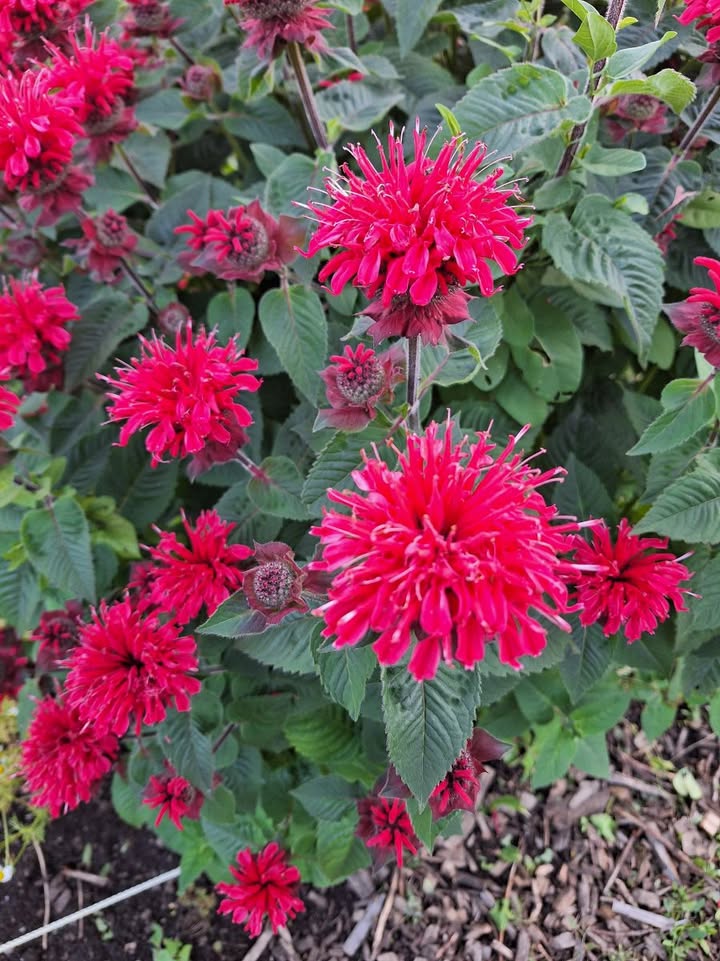ADVERTISEMENT
All gardeners should grow this native perennial. Here's why

Ecological Importance of Growing Bee Balm
Growing bee balm in your garden contributes significantly to local biodiversity. As a native plant, it is well-suited to the local environment and supports a wide range of wildlife. Bee balm provides nectar and pollen for bees, butterflies, and hummingbirds, making it an essential plant for pollinator gardens. Its dense foliage also offers shelter for beneficial insects and small animals. By incorporating bee balm into your garden, you help maintain ecological balance and promote a healthy, thriving ecosystem.
Bee Balm's Role in Supporting Pollinators
Bee balm is a magnet for pollinators, thanks to its vibrant flowers and abundant nectar. The tubular shape of its blooms is particularly attractive to hummingbirds, while bees and butterflies are drawn to its rich nectar supply. By planting bee balm, gardeners can support declining pollinator populations, which are crucial for the pollination of many food crops and wild plants. This plant's extended blooming period, from mid-summer to early fall, ensures a continuous food source for pollinators throughout the growing season.
Aesthetic and Practical Advantages of Bee Balm in Gardens
Beyond its ecological benefits, bee balm adds aesthetic and practical value to gardens. Its bright, showy flowers create a stunning visual display, making it a focal point in any garden design. The plant's aromatic leaves can be used to make herbal teas and potpourris, adding a practical element to its appeal. Bee balm's ability to attract pollinators also enhances the productivity of nearby fruit and vegetable plants, making it a valuable companion in edible gardens.
How to Cultivate and Care for Bee Balm
Cultivating bee balm is relatively straightforward, making it an excellent choice for both novice and experienced gardeners. Start by selecting a site with full sun to partial shade and well-drained soil. Plant bee balm in the spring or fall, spacing plants about 18 to 24 inches apart to allow for air circulation. Water regularly to keep the soil consistently moist, especially during dry spells. To encourage bushier growth and more blooms, pinch back the tips of young plants. Deadhead spent flowers to prolong the blooming period, and divide the plants every 2 to 3 years to prevent overcrowding and maintain vigor.
Common Varieties of Bee Balm and Their Unique Features
There are several popular varieties of bee balm, each with unique features. 'Jacob Cline' is known for its striking red flowers and mildew resistance, making it a favorite among gardeners. 'Raspberry Wine' offers deep raspberry-colored blooms and a robust growth habit. For those seeking a more compact variety, 'Petite Delight' is an excellent choice, with its lavender-pink flowers and dwarf size. Each variety brings its own charm and can be selected based on color preference, garden space, and specific growing conditions.
Challenges and Solutions in Growing Bee Balm
While bee balm is generally easy to grow, gardeners may encounter a few challenges. Powdery mildew is a common issue, especially in humid climates. To prevent this, ensure good air circulation by spacing plants adequately and watering at the base to keep foliage dry. If mildew appears, remove affected leaves and consider using a fungicidal spray. Bee balm may also spread aggressively, so regular division and deadheading can help manage its growth. By addressing these challenges, gardeners can enjoy the full benefits of this vibrant perennial.
Integrating Bee Balm into Different Garden Styles
Bee balm's versatility allows it to be integrated into various garden styles. In cottage gardens, it complements other traditional perennials like coneflowers and black-eyed Susans. Its bold colors and height make it a striking addition to prairie or meadow gardens, where it can mingle with grasses and other wildflowers. For a more formal look, plant bee balm in structured borders or as a backdrop to shorter plants. Its adaptability ensures that it can enhance any garden design, providing both beauty and ecological benefits.